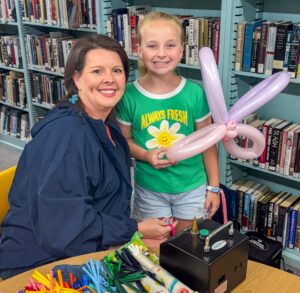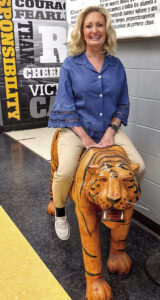Special breeds bring positive impact
At any given time, the sound of bleating sheep and whinnying horses can be heard at Montgomery Oaks, the farm of Scott and Tricia Montgomery. The desert painted sheep and gypsy vanner horses are joined by ducks, geese, chickens, turkeys and llamas.
Several things make this farm unique – most notably the special breeds. The Montgomerys brought the first-ever desert painted sheep and gypsy vanner horses to Alabama, as far as they know. These efforts were not made for the pure fun and joy of it – although the family said they love what they do.
“It’s about the relationship with the animals and the land,” Tricia said.
Originally, they just owned brown sheep, but Tricia said her dad had trouble seeing them with his eyesight, so she bought more-visible black and white sheep so he could see them during his last few years.
She said the desert painted sheep provide more options because they differ in size and color. Some have the ticking gene, which means they develop spots or freckles, and some are mouflon, which will darken as they age.
They are a multimarket breed that is parasite-resistant and shed out every year, according to Tricia.
“They are helpful,” Tricia said. “In the spring they eat the onions that grow up, and in the winter they’ll eat the pine needles and spruce.”
It’s all a part of a give-and-take process. Tricia said the sheep help her take care of the land and do right by the land, which is only appropriate because “nature has given us so much.” It has also opened new avenues to her, enabling her to meet so many different people.
“I get to do the thing I love, but it has also given me the chance to be more than I ever wanted to be or thought I could be,” she said.
The gypsy vanner horses are also a unique breed Tricia said she hopes to be able to use to give back to the community and help people. These horses look like a shorter, stockier version of a Clydesdale. Possibly their most striking characteristic is their long, flowing hair of their manes, tails, behind the knees and hocks.
Currently, the Montgomerys own two: Joy and Elise. They are2 years old, and Tricia said she is excited to get them fully trained and ready to ride.
“They are such calm and secure stable horses that love people,” she said.
Her hope is that she will be able to use these horses or let other people use them to work with and help children, particularly children with disabilities or handicaps. She and Scott have worked with the Handicapped Equestrian Learning Program, which is a nonprofit riding therapy center.
“I have seen the transformations that can happen when these children interact with the horses. It’s therapeutic,” she said.
It also gives the parents an outlet for their children that brings them joy and gets them outside, she added. “There’s a peace that comes over it. There’s unity; God is there, no doubt.”
All of these efforts, including the llamas the Montgomerys purchased to protect the sheep, are part of Tricia’s belief in putting positive, good things out into the world and causing beautiful ripples that spread change.








